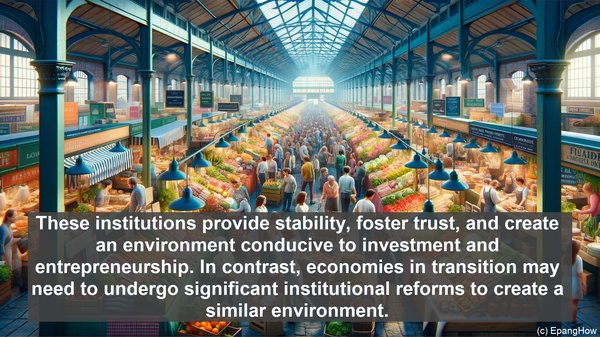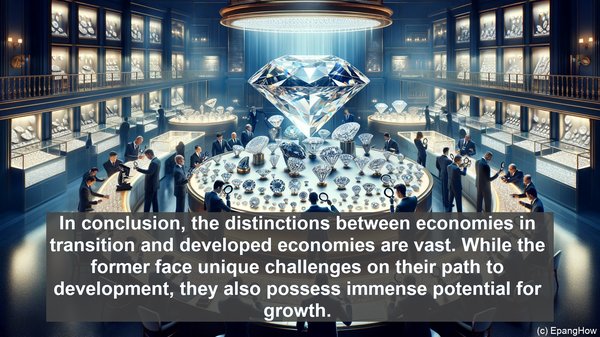Introduction: The Economic Spectrum
Hello everyone! Today, we’re going to delve into the fascinating world of economies, specifically focusing on the distinctions between economies in transition and developed economies. As we explore this topic, we’ll gain insights into the factors that shape these economies, their unique challenges, and the strategies they employ for growth and stability.

Defining Economies in Transition
Economies in transition, as the name suggests, are those undergoing significant changes in their economic structure, often transitioning from a centrally planned system to a market-oriented one. These transitions are typically accompanied by political changes, such as the fall of a centralized regime. Countries in this phase often face numerous challenges, including privatization, market liberalization, and establishing regulatory frameworks.
The Journey to Development
On the other end of the spectrum, we have developed economies. These are nations that have reached a high level of economic advancement, characterized by factors such as high per capita income, well-established infrastructure, and a diverse range of industries. Achieving this status is the result of decades, if not centuries, of sustained economic growth, innovation, and effective governance.
Factors Influencing Economic Trajectories
Several factors contribute to the divergent paths taken by economies in transition and developed economies. Historical context plays a crucial role, with countries that experienced colonization or prolonged periods of political instability often facing more significant challenges in their development. Additionally, access to resources, both natural and human, can shape a nation’s economic trajectory.

The Role of Institutions
Institutions, both formal and informal, are vital in shaping economic outcomes. Developed economies often boast robust institutions, including transparent legal systems, efficient bureaucracies, and strong property rights. These institutions provide stability, foster trust, and create an environment conducive to investment and entrepreneurship. In contrast, economies in transition may need to undergo significant institutional reforms to create a similar environment.
The Importance of Education and Innovation
Education and innovation are two pillars of economic development. Developed economies typically have well-established education systems that produce a skilled workforce capable of driving innovation and technological advancements. In contrast, economies in transition often face the challenge of modernizing their education systems to meet the demands of a rapidly changing global economy.
Trade and Global Integration
Trade and global integration can be powerful drivers of economic growth. Developed economies, with their established industries and networks, often have a strong presence in global markets. They can leverage their expertise and resources to engage in international trade. For economies in transition, integrating into the global economy can be a complex process, requiring the removal of trade barriers, establishing trade agreements, and building competitive industries.
